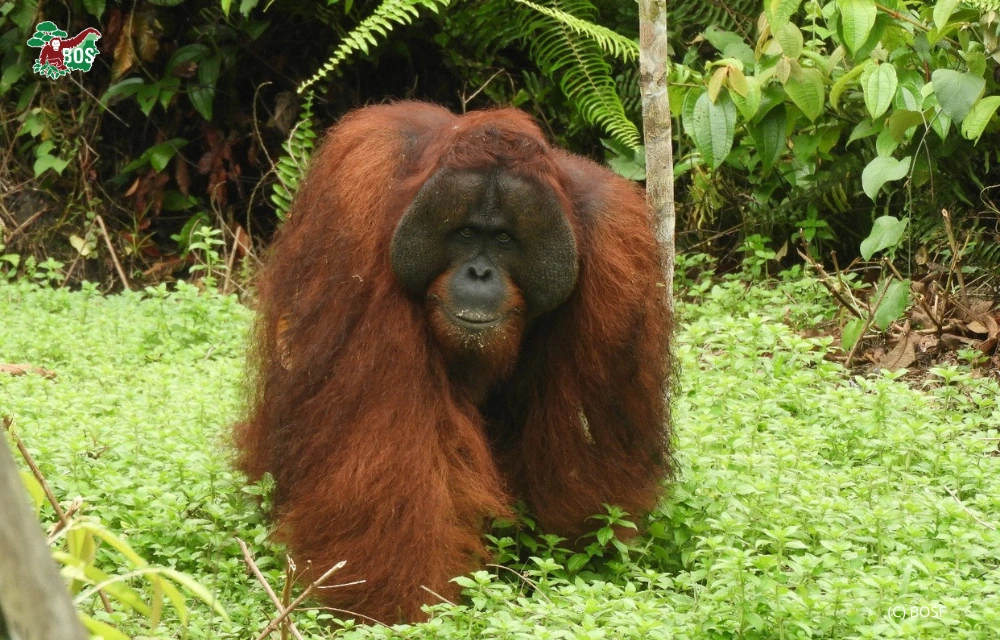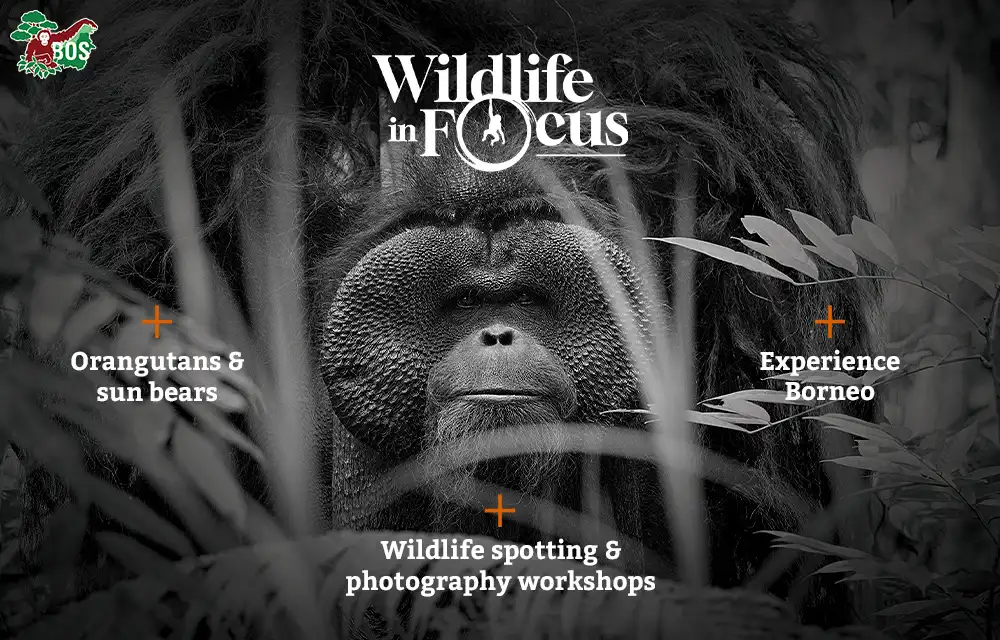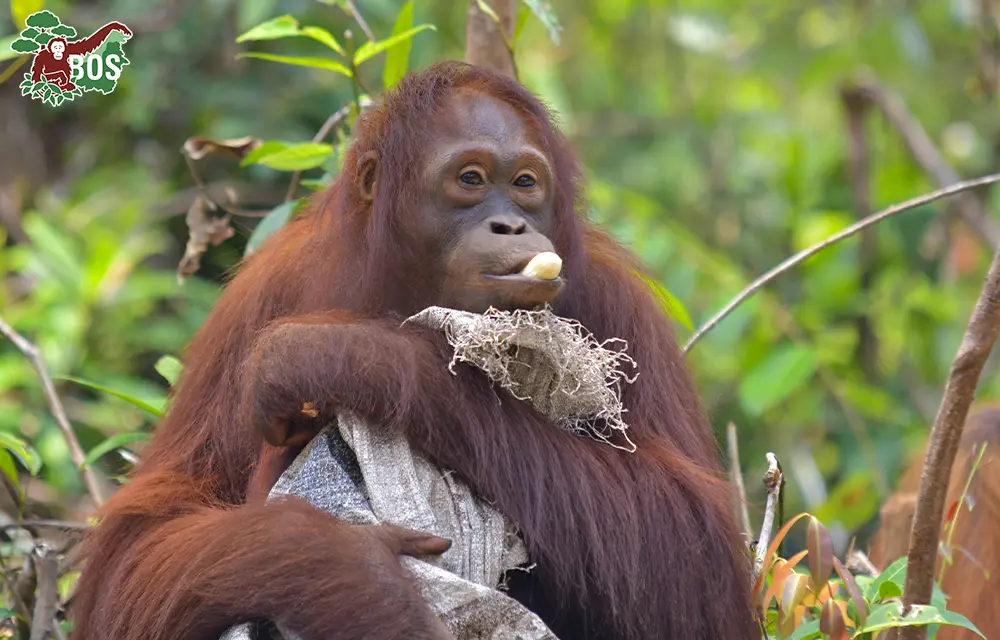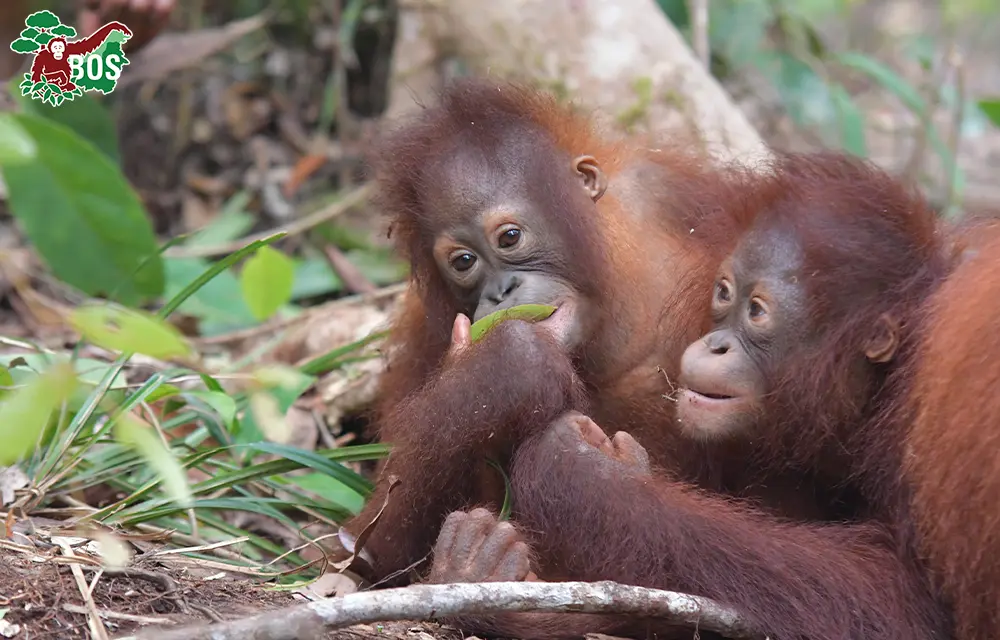Do you remember Mardianto, the male orangutan released in the Bukit Batikap Protected Forest? He was one of hundreds of orangutans monitored by the Post-Release Monitoring (PRM) team. Once every year we are able to meet with Mardianto. At the time of his initial release, Mardianto did not yet have fully developed cheek-pads or flanges due to his immature age.
Gradually, we met Mardianto in the forest, we observed that the shape and morphology of his face was changing. It appears that his face has changed due to the growth of flanges, which are fatty protrusions on the cheeks. The growth of flanges indicates that male orangutans like Mardianto sexual matured. Most flanges on individual male orangutans will appear when they reach the age of 10 years and above. However, not all male orangutans of a mature age will immediately experience the growth of flanges; flanges only occur in dominant male orangutans.
Male orangutans can become dominant due to several mechanisms such as social interactions. Males with smaller or still-developing flanges are more social than males with larger flanges. Males with large, fully developed flanges usually prefer to live a solitary life and dominate their territory, while males with flanges that are still growing spend more time interacting with and attracting females. The growth of flanges in male orangutans can encourage the enlargement of their throats, allowing them to make long calls that attract females.
There are other changes in facial morphological traits as the flanges grow to a perfect shape in male orangutans, such as darker blackened skin around the eyes, eyelids and mouth, and a thicker beard and moustache. The growth of flanges in male orangutans can be delayed or stopped when the presence of other dominant males triggers intrasexual competition. Male orangutans that successfully grow flanges in the wild are considered to be able to win intrasexual competition and demonstrate reproductive success in attracting females, such as Mardianto.

The PRM team had captured some photos of Mardianto from 2019, during that year Mardianto was found on a tree near the riverbank, Mardianto’s face began to show a little change, his face was darker, his beard was thicker, and a small widening at the tip of his cheeks. The following year, 2020, we met Mardianto again relaxing on a lush tree, we were very surprised to see the growth of Mardianto’s cheek-pads which were getting wider like a bowl, as well as the following year, 2021, Mardianto’s cheek-pads were seen getting bigger and wider, very clearly visible when we observed him climbing trees.
In 2022 until now, the PRM team still has the opportunity to meet Mardianto in the forest, whether he is doing activities around the river and drinking water, sitting on a fallen tree trunk while observing the surroundings like a forest king who controls the place, or taking a leisurely walk around the river. It was amazing to see the morphological changes in Mardianto’s face, not only his face, but also his body getting bigger and his hair getting thicker.
After the changes to his face, some people may find it difficult to recognise Mardianto’s orangutan face, but it was not difficult for the PRM team. At first glance, it looks like a different individual orangutan. But each orangutan has its own characteristics. Like Mardianto, who has a special characteristic on his back, it was easy for the PRM team to recognise Mardianto despite the changes.

Thank you to our teammates and donors who have supported our orangutan observation team over the years. We are so proud to see the well-being of Mardianto as he returns to the wild and adapts to become a fully-fledged male orangutan!
Text by: Danur Kresna Murti, PRM Team at Himba Pambelum Monitoring Camp & Hana Iffatalya, Japan Environmental Education Forum (JEFF) Program Internship Student Batch 6
Will you help us rescue, rehabilitate and release orangutans back to freedom? Thank you!





